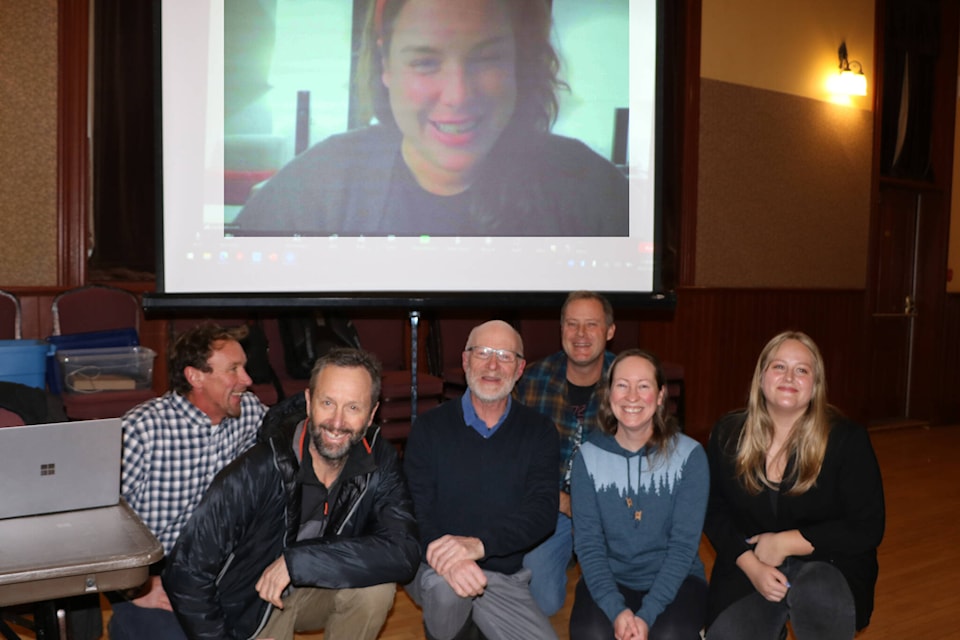Rossland Council considered taking a more political stance in opposition to the proposed open-pit magnesium mine on Record Ridge in Area B at its meeting on Monday, June 5.
Following an at times intense Open House with Western High Yield (WHY) Resources last month, Mayor Andy Morel asked city planner Stacey Lightbourne to report on the mine proposal.
The staff report summarizes the brief history and concerns the city has with WHY Resources and the Ministry of the Energy, Mines, and Low Carbon Innovation (EMLI).
A representative from the City of Rossland attended a 2019 meeting in Nelson for a pre-screening of the WHY Resources application, and identified a number of concerns including the mine circumventing proper practice in mine permitting and avoiding environmental assessment regulations.
Lightbourne then joined the official screening of the Mine Permit Review Committee in May of 2022 to ensure the application was complete.
On May, 8, 2023, the Review Committee informed city staff that the screening had been closed, and the proposed project was under review.
WHY Resources hosted an open house May 17-18, that was not part of the official process, but raised many questions.
Big Sheep Creek resident and rockhound, Rob Murdoch, attended the meetings and shared with the Rossland News a 2008 Diamond Drilling BC Assessment Report on Record Ridge South property that shows chrysotile serpentinite (asbestos) in the core samples.
“They are stating on their website that there is no asbestos at the mine site,” said Murdoch. “At the meetings it kind of went haywire, and they said there are only minimal samples.”
WHY Resources’ website previously noted mining magnesium ore would be “Open Pit high grade, oxide rich deposit with exceptional mineralogy and free of harmful contaminates (asbestos, etc.)”
Representatives from EMLI attended the meetings but only as observers. According to the report, an EMLI rep indicated that they are aware that the communities and Indigenous Nations have many concerns regarding this project, and they will try to ensure all voices have been heard throughout the review, which will take as long as necessary to have a thorough examination of the project.
Coun. Lisa Kwiatkowski asked how council could play a more active role in the decision making process, gain access to better or more information for the community, and potentially seek legal advice or precedent regarding the mine application.
The Mayor also queried if council would support the release of a statement regarding its own opposition to the proposed mine, adding that almost every Rossland resident had sent a letter to NDP MP Richard Cannings in response.
“For me, there’s no question that people are asking for that,” said Morel. “And they want strong leadership shown in this particular issue. What that looks like I am open to suggestions, again making a statement as well as contacting the Ministry to talk to them about our concerns.”
Coun. Stewart Spooner noted that regardless of residents’ or council’s opinions, the decision will be “decided on a technical basis and be decided based on the Mine’s Act.”
Mayor Morel countered, saying: “I know for a fact that the technical aspect is one aspect of it, of the application. But there is no question that public feedback is a big part of it.”
The Mayor noted that in December, 2017 the province rejected a copper mine application in Kamloops.
The mine was to be located just two kilometres from a residential area. An environmental assessment report cited air quality concerns as one of the determining factors for rejection of the project.
“It had gone down the process and the assessment committee and neighbourhoods and communities affected strongly opposed,” said Morel. “So it is of great value for the communities involved.”
Coun. Jeff Weaver suggested that council should not take a stand either way, but make a request for more information, such as “What are you going to do about the trucks, what are you going to do about asbestos?”
“I think it is still very early to be taking a political position,” said Weaver.
In the Kamloops case, the EAO and the Canadian Environmental Assessment Agency coordinated the environmental assessment, yet, the process also included the establishment of an intergovernmental advisory working group, consultation with Indigenous groups, extensive engagement with the public and the City of Kamloops, the creation of a community advisory group, and the negotiation of a collaboration agreement with the Stk’emlupsemc te Secwépemc Nation.
Coun. Mia Provençal noted that Section 11 of the BC Mines Act reads, “If the Minister considers it to be necessary in the public interest, the minister, in respect of the issuing of permits, has and may exercise all of the powers that the chief permitting officer may exercise under this Act.”
Following more discussion, council passed a motion to send a letter to the Minister of EMLI, Josie Osborne, requesting information on the full mining application and expressing the community’s concerns.
Read: WHY consultation process over Record Ridge mine continues
Read: WHY strikes gold at Midnight claim near Rossland
Read: Mayor concerned about open pit mine near Rossland
sports@trailtimes.ca
Like us on Facebook and follow us on Twitter
